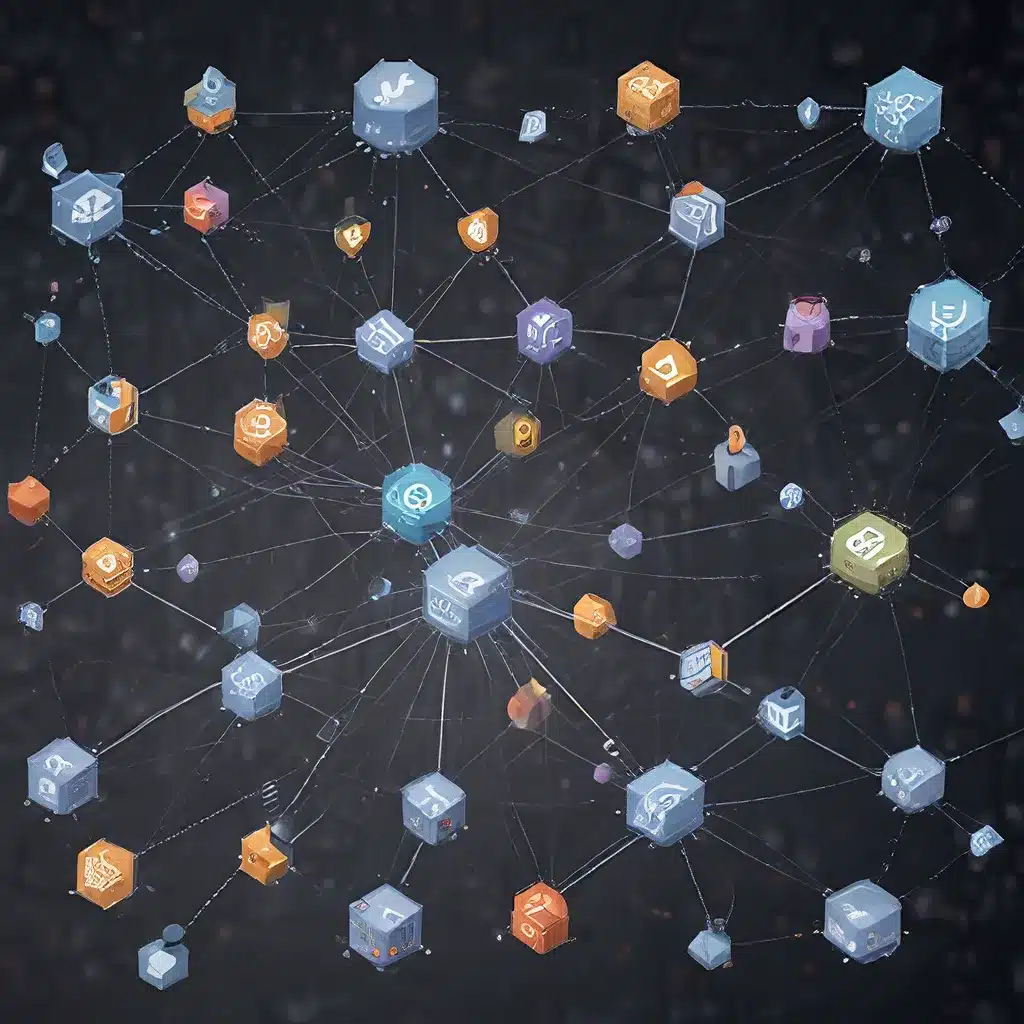
In the rapidly evolving landscape of sensor networks and Internet of Things (IoT) technologies, the efficient allocation of resources has emerged as a critical challenge. As the proliferation of sensor-driven IoT systems continues, the need for innovative distributed algorithms to optimize resource utilization has become increasingly paramount. This article delves into the intricacies of resource allocation in sensor-driven IoT ecosystems, exploring the cutting-edge research and practical applications that are shaping the future of this dynamic field.
Navigating the Complexities of Sensor Network Design
Sensor networks are the foundational building blocks of modern IoT systems, enabling the collection, processing, and exchange of vast amounts of data from the physical world. Designing these networks, however, is a complex undertaking that requires a delicate balance between various factors, such as network topology, energy management, and data communication protocols.
Researchers have explored distributed algorithms that can dynamically adapt to the unique requirements of sensor-driven IoT applications, ensuring optimal resource allocation and energy efficiency. These algorithms leverage the inherent decentralized nature of sensor networks, empowering individual nodes to make autonomous decisions and coordinate with their peers to achieve global optimization.
One such approach, known as the Multi-Agent Reinforcement Learning (MARL) algorithm, has shown promising results in managing the intricate trade-offs between energy consumption, data throughput, and network reliability. By employing a cooperative game-theoretic framework, MARL-based solutions enable sensor nodes to learn and adapt their behaviors, ultimately leading to more efficient resource utilization and load balancing across the network.
Addressing the Security Challenges in IoT Ecosystems
As sensor-driven IoT systems become increasingly integrated into our daily lives, the need for robust security measures has become paramount. The distributed nature of these networks, coupled with the heterogeneity of connected devices, presents a unique set of challenges that require innovative security protocols and cryptographic techniques.
Researchers have developed secure communication protocols that leverage blockchain technology and edge computing to enhance the data integrity and access control in IoT environments. By incorporating decentralized consensus mechanisms and smart contracts, these solutions can mitigate the risks of cyber attacks, data breaches, and unauthorized access, ensuring the confidentiality and reliability of sensor-driven IoT systems.
Moreover, the adoption of edge computing in IoT architectures has enabled the implementation of distributed anomaly detection algorithms. These algorithms analyze sensor data at the edge, quickly identifying and responding to security threats, reducing the reliance on centralized cloud infrastructure and minimizing the risk of single points of failure.
Advancing Energy Efficiency in Sensor-Driven IoT Systems
One of the critical challenges in sensor-driven IoT systems is the efficient management of energy resources. Sensor nodes, often deployed in remote or hard-to-access locations, must operate for extended periods with limited power sources, necessitating the development of innovative energy-efficient strategies.
Researchers have explored distributed algorithms that can optimize energy consumption by dynamically adjusting sensor sampling rates, data transmission schedules, and network topologies. These algorithms leverage machine learning and game theory to enable sensor nodes to make autonomous decisions, ensuring the longevity of the network and the sustainability of the overall IoT ecosystem.
Additionally, the integration of renewable energy sources, such as solar and wind, has become a crucial aspect of energy management in sensor-driven IoT systems. Distributed algorithms that can intelligently manage the energy harvesting and storage capabilities of sensor nodes can further enhance the energy efficiency and resilience of these networks.
Unlocking the Potential of Sensor-Driven IoT Applications
The advancements in distributed algorithms for resource allocation have unlocked a wide range of innovative IoT applications that leverage the power of sensor networks. From smart cities and precision agriculture to industrial automation and healthcare monitoring, these sensor-driven IoT systems are transforming the way we interact with the physical world.
In the realm of smart cities, for example, distributed algorithms are employed to optimize the traffic flow, energy consumption, and waste management within urban environments. By leveraging data from a network of traffic sensors, streetlights, and waste collection systems, these algorithms can make real-time decisions to enhance efficiency, sustainability, and quality of life for city dwellers.
Similarly, in precision agriculture, sensor-driven IoT systems are revolutionizing the way farmers manage their crops and livestock. Distributed algorithms can analyze data from soil moisture sensors, weather stations, and animal tracking devices to optimize irrigation, fertilization, and herd management, ultimately leading to increased productivity and reduced environmental impact.
Embracing the Future of Sensor-Driven IoT Systems
As the technological landscape continues to evolve, the importance of distributed algorithms for efficient resource allocation in sensor-driven IoT systems will only continue to grow. These innovative solutions are paving the way for more intelligent, resilient, and sustainable IoT ecosystems, unlocking a future where the physical and digital worlds seamlessly converge.
By staying at the forefront of this rapidly advancing field, sensor-networks.org is committed to empowering researchers, engineers, and enthusiasts with the latest insights, best practices, and emerging trends in sensor network design, IoT applications, security, and energy management. Join us as we explore the boundless possibilities of this transformative technology and shape the future of our interconnected world.